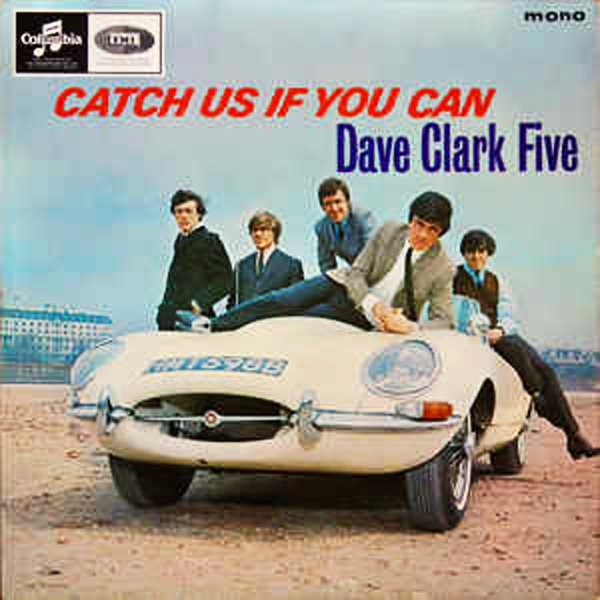
Gemini 1 test flight is conducted on April 08, 1964
Gemini 1 test flight is conducted: Gemini 1 was the first mission in NASA's Gemini program. An uncrewed test flight of the Gemini spacecraft, its main objectives were to test the structural integrity of the new spacecraft and modified Titan II launch vehicle. It was also the first test of the new tracking and communication systems for the Gemini program and provided training for the ground support crews for the first manned missions.
Originally scheduled for launch in December 1963, difficulties in the development of both the spacecraft and its booster caused four months of delay. On April 08, 1964, Gemini 1 was successfully launched from Launch Complex 19 at Cape Kennedy (now Canaveral), Florida.
The spacecraft stayed attached to the second stage of the rocket. The mission lasted for three orbits while test data were taken, but the spacecraft stayed in space for almost 64 orbits until its orbit decayed due to atmospheric drag. The spacecraft was not intended to be recovered, and holes were drilled through its heat shield to ensure it would not survive re-entry.

Project Gemini was conceived as a bridge between America's single-seat Project Mercury and the three-seat Project Apollo. With a design largely extrapolated from its predecessor, the Gemini spacecraft would allow two astronauts to conduct the maneuvers inherent in Apollo's lunar mission: rendezvous, docking, and changing of orbit. Moreover, Gemini would support astronauts in space for extended flights, approximating the expected length of the Apollo missions.
Its two-person capacity and greater capabilities meant that Gemini would be a substantially heavier spacecraft than Mercury had been — too heavy to be lofted into orbit by Mercury's Atlas rocket. A replacement was needed. The newly developed Titan II ICBM (which had also been tapped by the Air Force for its X-20 spaceplane project) was an attractive replacement.
It had a thrust some two and a half times that of the Atlas, a far simpler mechanical construction, and the ability to store propellants indefinitely. Moreover, the Titan II's propellants mixed less violently than those of Atlas meaning a booster explosion, should it happen, would be less violent. This made obsolete the heavy escape tower used in the Mercury program; instead, ejection seats could be used.
The primary goal of the first Gemini mission was to flight test the modified Titan II launch vehicle and the basic structural soundness of the Gemini capsule under launch and orbital conditions. Secondary goals of the mission included testing the remote guidance systems, the Titan's redundancy systems, and evaluation of the Gemini-Titan malfunction detection system.
NASA.gov / Wikipedia / Lunar and Planetary Institute /
The Atlantic / Gunter's Space Page / Manned Space Ops.org /
Gemini 1 test flight is conducted on April 08, 1964 (YouTube) 

Understanding Military Terminology
Operational Control
(DOD) The authority to perform those functions of command over subordinate forces involving organizing and employing commands and forces, assigning tasks, designating objectives, and giving authoritative direction necessary to accomplish the mission.
Also called OPCON.
See also Combatant Command; Combatant Command (Command Authority); Tactical Control.
Joint Publications (JP 1-0) Doctrine for the Armed Forces of the United States
Operational Control Authority
The naval commander responsible within a specified geographical area for the naval control of all merchant shipping under Allied naval control.
Also called OCA.
Joint Publications (JP 3-15) Barriers, Obstacles, and Mine Warfare for Joint Operations
Operational Decontamination
Decontamination carried out by an individual and/or a unit, restricted to specific parts of operationally essential equipment, materiel and/or working areas, in order to minimize contact and transfer hazards and to sustain operations.
See also Decontamination; Immediate Decontamination; Thorough Decontamination.
Joint Publications (JP 3-11) Operations in Chemical, Biological, Radiological, and Nuclear Environments

The Old Salt’s Corner
“The Rime of the Ancient Mariner”
PART VI
First Voice
‘But tell me, tell me! speak again,
Thy soft response renewing -
What makes that ship drive on so fast?
What is the ocean doing?’
Second Voice
‘Still as a slave before his lord,
The ocean hath no blast;
His great bright eye most silently
Up to the Moon is cast -
If he may know which way to go;
For she guides him smooth or grim.
See, brother, see! how graciously
See, brother, see! how graciously
The Mariner hath been cast into a trance; for the angelic power
causeth the vessel to drive northward faster than human life could endure.
continued ...
~ Samuel Taylor Coleridge
(originally published in Lyrical Ballads, 1798)
Full Poem

“I’m Just Sayin”
“What is food to one
is to others bitter poison.”
“If the matter of death is reduced to sleep and rest,
what can there be so bitter in it,
that any one should pine in eternal grief for the decease of a friend?”
“Air,
I should explain,
becomes wind when it is agitated.”
“Did men but know that there was a fixed limit to their woes,
they would be able,
in some measure
to defy the religious fictions and menaces of the poets;
but now,
since we must fear eternal punishment at death,
there is no mode,
no means,
of resisting them.”
~ Lucretious

“Thought for the Day”
“Where the spirit does not work with the hand, there is no art.”
“I have been impressed with the urgency of doing.
Knowing is not enough; we must apply.
Being willing is not enough;
we must do.”
“Nature is the source of all true knowledge.
She has her own logic, she has no effect without cause nor invention without necessity.
her own laws,
she has no effect without cause nor invention without necessity.”
~ Leonardo da Vinci

“What I Learned”
“Things may come to those who wait,
but only the things left by those who hustle.”
“Unless you try to do something beyond what you have already mastered,
you will never grow.”
“People who say it cannot be done
should not interrupt those who are doing it.”
~ Anonymous

Second Hand News: Articles from Week 15 - April 06, 2020 - April 12, 2020
 “Imperiling the lives of millions:” Trump trade adviser warned of coronavirus pandemic in January
• Glimmers of hope ignite financial markets even as coronavirus deaths pass 10,000
• Biden-Trump phone call saga provides high drama and little action
“Imperiling the lives of millions:” Trump trade adviser warned of coronavirus pandemic in January
• Glimmers of hope ignite financial markets even as coronavirus deaths pass 10,000
• Biden-Trump phone call saga provides high drama and little action
Devin Nunes: FBI “experts” were hoping for dirt on Carter Page to leak right before 2016 election
• Ted Cruz warns businesses of 'bureaucratic hurdles' when applying for loans from coronavirus relief package
• List: 30 regulations that stymied Trump's virus response
Trump says he may 'get involved' in dispute between Navy secretary and ousted captain
• Navy chief apologizes to ousted captain after calling him “too naive or too stupid” to lead ship
• Military gives COVID patients chloroquine and surges assets to New York City
MOST READ: Schiff won't stop weaponizing intelligence absent DOJ indictments: Plot Against the President
• Joe Rogan is the Democratic Party's canary in the coal mine
• Conservatives upset with 'fascistic behavior' after woman cited for violating stay-at-home order
“I can't take it anymore:” Democrat threatens Trump with Hague referral over hydroxychloroquine
• White House Coronavirus Task Force: “Drama erupted” between economic adviser Peter Navarro and the Director of the National Institute of Allergy and Infectious Diseases Anthony Fauci over potential coronavirus treatment
• “We can really bring that down:” Fauci and Birx hopeful U.S. can lower projected coronavirus death toll
Washington Examiner
 Cooperate With China? Not Until It Stops Lying About The Coronavirus
• Optimism Is Dawning In New York City As Coronavirus Cases Slow
• 12 Ways To Save Millions Of Vulnerable American Lives By Banning More Things
• How Politicians Will Exploit Coronavirus To Further Restrict Our Rights
Cooperate With China? Not Until It Stops Lying About The Coronavirus
• Optimism Is Dawning In New York City As Coronavirus Cases Slow
• 12 Ways To Save Millions Of Vulnerable American Lives By Banning More Things
• How Politicians Will Exploit Coronavirus To Further Restrict Our Rights
United Nations Discredits Itself By Awarding China A Seat On Its ‘Human Rights Council’
• Yes, Captain Crozier Should Have Been Relieved Of His Command
• Democrats In Congress Won’t Let Andrew Cuomo Fight Medicaid Fraud
• Wisconsin Voting Saga Is A Case Study In Coronavirus Election Madness
MOST READ: WATCH: CBS News Posts Fraudulent Video Of ICU Nurse Crying Over Poor Working Conditions
• Why Severe Social Distancing Might Actually Result In More Coronavirus Deaths
• Why Inspector General Michael Atkinson Roundly Deserved To Be Fired
The Schoolwork My Kids Are Bringing Home Exposes Public Schools’ Radical Leftist Politics
• Why It’s Unconstitutional To Keep Grocery Stores Open While Closing Churches
• The Real Coronavirus Chronology Shows Trump Was On Top Of It While Biden Was Mocking The Danger
• FCC Rejects Petition By Far-Left Media Group To Censor Trump Press Briefings
The Federalist

When can the Trump Administration reopen for business & What is to be done?

Virtual conventions to nominate socially distant candidates?

Looking for a successful exit from the shutdown #in-the-time-of-the-virus.

Why is Bill Gates building factories for a vaccine that does not yet exist?

Did Captain Brett Crozier risk national security by telling foes the Theodore Roosevelt is out of action?
 John Batchelor (04/06/2020)
John Batchelor (04/06/2020)
 CORRUPTION CHRONICLES: FBI KNEW FISA Warrants to Spy on Trump were GARBAGE! Where are the Prosecutions?
CORRUPTION CHRONICLES: FBI KNEW FISA Warrants to Spy on Trump were GARBAGE! Where are the Prosecutions?
“Investigating the Investigators:” $19 Million Grasshopper Aid, Buttigieg’s Testimony & Coronavirus
Weiner Laptop Scandal - Clinton Email Cover-Up; Coronavirus Update and Buttigieg Court Battle
It’s Time To Review Our Relationship With China
Judicial Watch

Mr. Answer Man Please Tell Us: How Does the Restroom in the International Space Station Work?
Astronauts fasten yourselves down, take a deep breath, attach to the toilet, so that, your body won't float away.
The absence of gravitational acceleration makes things a bit different.
The first thing an astronaut has to do is make sure he or she is seated properly. You can't just sit down in space, since there is no down. So, you'll notice there are straps to hold their feet so they won't float away, mid-use.
The next thing the astronaut has to do is make sure they are aligned correctly. There is actually a camera that looks up from the toilet so the crew member can make sure they are oriented properly.

Relieving oneself is not that different. It's a little different because on Earth gravity does play a role by pulling things down, but much of the movement of fluids and solids is initiated by muscles within the body.
Here's where it gets really different: To replace the force of gravity to ensure waste goes down into the toilet, there is actually a vacuum hose that sucks the waste.
Urine is actually collected and then processed through a device that purifies the urine and converts it back into drinking water.

If the toilet is not working, one has to go into a baggy that has ampules that can be crushed to chemically react with the waste to prevent things like off-gassing and bacterial growth.
The bright side is that because of both changes in digestion and foods eaten, astronauts do not have to go to the bathroom as often as we do on Earth.
Business Insider / Wikipedia / Quora /
Space Station Explorers.org / Space.com /
Canadian Space Agency asc-csa.gc.ca / NASA /
How Does the Restroom in the International Space Station Work? (YouTube) 

NAVSPEAK aka U.S. Navy Slang
MAA: Master-at-Arms. A rate in the Navy similar in duties to a police officer.
MAD Boom surfing: Struggling to complete or barely passing required evolutions in training on the P-3 Orion Patrol Aircraft. Named for the Magnetic Anomaly Detector that sticks out from the tail of the aircraft. Variations include clinging to the MAD boom or water-skiing from the MAD Boom.
Mae West: (Old) term for a life jacket.
Mad Shitter: (AKA Phantom Shitter) A sailor who does not flush a toilet. A prankster who defecates in public areas of a ship.
Mail Buoy: A fictitious bouy that mail for a ship is left on. Usually new sailors are given a mail buoy watch for the entertainment of the more seasoned sailors.
Magic Smoke: Substance that makes naval electronics work. Equipment failure is usually caused by letting the smoke out.
Wiktionary.org

Just for you MARINE
Marjah Marines: Marines who served in the Battle For Marjah 2010 with 1st BLT 6th Marines.
M: A prefix to the model number of a specific nomenclature of equipment, generally considered to denote “model” or “mark”. Also us in the phonetic alphabet for “Mike”.
Ma'am: Proper method of addressing female officers.
Mac Marine: Nickname for Marine, popular during World War II, also the career planner popular on posters of the 1960s.
Mad Max: Term for a military vehicle that is irregular in appearance due to repairs, modifications or the presence of extra equipment. See also Hillbilly Armor.
Wikipedia.org

Naval Aviation Squadron Nicknames
HSC-25 Helicopter Sea Combat (HSC) Squadron Twenty Five (Helicopter Anti-Submarine Squadron Twenty Five or HSC-25) - nicknamed the “Island Knights”
United States Navy - Naval Air Station - Naval Air Station, Andersen Air Force Base, Guam: February 03, 1984 - present.

Where Did That Saying Come From?

“A watched pot never boils:”
Meaning: The proverbial expression 'a watched pot never boils' refers to the feeling time seems to go slower when you are anxiously waiting for something to happen. (If something takes time to finish, don't watch it too closely because it will seem like it's taking forever.)
History: 'A watched pot never boils' is one of the homely and improving proverbs that is ascribed to Poor Richard, which was the pseudonym that Benjamin Franklin used when publishing his widely popular annual almanac.
Franklin, a tireless and industrious polymath, was fixated on such improving aphorisms and published numerous of them in the guise of Poor Richard between 1732 and 1758. The general theme of the proverbs can be summed up as 'Industry: good; sloth: bad'. They include:
“There are no gains without pains. Early to bed and early to rise makes a man healthy, wealthy and wise.”
“Plough deep while sluggards sleep and you shall have corn to sell and to keep. Have you something to do tomorrow? Do it today.”
Amongst many other callings, Franklin was a noted diplomat and during his time as United States envoy to France he was directed by the King to write a report on Franz Mesmer's controversial theory of 'animal magnetism'. In the report, published in 1785, Franklin included this text:
Finally another Breakfast is ordered. One Servant runs for fresh Water, another for Coals. The Bellows are plied with a will. I was very Hungry; it was so late; “a watched pot is slow to boil”, as Poor Richard says.
Actually, Franklin ought to have written “as Poor Richard might have said”, as the proverb isn't found in any of the Poor Richard almanacs. That's a moot point however, Franklin and Poor Richard being one and the same.
Of course, Franklin was also a celebrated scientist and would have been aware that watching a pot has no effect on how long it takes to boil. Like many of the most effective proverbs, this one is poetic rather than literal.
Phrases.org.uk

Science & Technology

Forests on the radar
• How cells protect themselves from mitochondrial defects
• Gimme six! Researchers discover aye-aye's extra finger
• Coral discovery equips researchers with new environmental monitoring method
Phys.org / MedicalXpress / TechXplore
One of these is a deadly viper. The other is a harmless toad. Can you tell the difference?
• Top stories: Top U.S. scientist speaks out, an epic Bronze Age battle, and the risks of raw dog food
• How the world’s largest geode grew to half the size of a small bedroom
• ‘Fast new 3D printing method creates objects as big as an adult human
Science AAAS

Bizarre News (we couldn’t make up stuff this good - real news story)
'Cursed' Primate Weirdos Have Extra Thumbs. Scientists Didn't Know About Them Until Now.

Aye-ayes possess small “pseudo thumbs” - Complete with their own fingerprint
There's a little extra thumb-thing on the hand of the aye-aye, a strange-looking nocturnal lemur native to Madagascar. Tucked near each wrist is a small nub of bone and cartilage that's like a miniature thumb - and until recently, scientists didn't know this pseudothumb existed.
Aye-ayes (Daubentonia madagascariensis) are considered by many to be the weirdest of all primates, with their coarse and frazzled bedhead fur, oversize ears, bulging eyes and bony, spindly fingers, one of which is exceptionally long.
But the discovery of the hidden mini-thumb makes aye-ayes even weirder: They are the only primate to have evolved an extra finger to help with grasping. The formerly unknown digit even has its own fingerprint, scientists reported in a new study.

In local Malagasy folklore, aye-ayes are seen as symbols of death and evil, capable of delivering curses and bringing bad luck, according to the Duke Lemur Center in North Carolina.
However, the aye-ayes' long, flexible fingers are best suited not for cursing humans, but for tapping on tree branches to locate hollow regions where tasty grubs hide, and then to poke inside holes and fish insects out, the Duke Lemur Center said.
“Their fingers have evolved to be extremely specialized — so specialized, in fact, that they aren't much help when it comes to moving through trees”, said co-lead study author Adam Hartstone-Rose, an associate professor of biological sciences at North Carolina State University (NCSU).
Aye-aye hands are so strange that when the animals move they appear to be “walking on spiders”, Hartstone-Rose said in a statement. It could be this extreme adaptation that drove the evolution of an extra digit to help with grasping, which aye-ayes' long, skinny fingers couldn't manage very well, the researchers wrote in the study.

Strange and unusual
It was during a routine dissection of an aye-aye's forearm when scientists found the extra digit; they were tracing a tendon that unexpectedly divided in two, said co-lead author Edwin Dickinson, a postdoctoral researcher with the NCSU Department of Biological Sciences.
“Rather than attaching to the 'true thumb', like the muscle does in other primates, it actually split to send half of the tendon to the true thumb and half to an expanded bone in the wrist - a bone which we now know forms part of this novel sixth digit, the pseudothumb”, Dickinson told Live Science in an email.
Intrigued, they went looking for this new digit in other lemurs: six adults and one juvenile. Sure enough, they found the mini-thumb in all the individuals, extending from both wrists.
But it isn't that surprising that this miniature thumb went unseen by scientists for so long, Dickinson said. Aye-ayes are rare, found only in Madagascar, and with very few in captivity; they're nocturnal, making their habits difficult to observe; and because their hands are so unusual, most of the attention that they get is focused on the digits that researchers could see, Dickinson explained.
The pseudothumb likely helps the aye-ayes grasp branches and other things, the study authors reported.
“The species has so many features that are unique among primates - ever-growing incisors, their specialized fingers, and huge ears - and their pseudothumb is yet more evidence of this”, Dickinson said.
“I think this discovery also really underscores how specializing your anatomy for a specific task - in this case, feeding - can necessitate some really bizarre and unexpected adaptations to compensate”, he added.
The findings were published online in the American Journal of Physical Anthropology
• Secrets of a Strange Lemur: An Aye-Aye Gallery
• 8 Humanlike Behaviors of Primates
• Wild Madagascar: Photos Reveal Island's Amazing Lemurs
• In Images: An Underwater Lemur Graveyard
Live Science (10/21/2019) 


SONG FACTS

“Catch Us if You Can” - The Dave Clark Five
Album: Catch Us if You Can
Released 1964 
“Catch Us if You Can”  was co-written by Clark with lead guitarist Lenny Davidson at the height of their popularity, this song also became a film title, a vehicle for the band in much the same way as was “A Hard Day's Night”
was co-written by Clark with lead guitarist Lenny Davidson at the height of their popularity, this song also became a film title, a vehicle for the band in much the same way as was “A Hard Day's Night”  for The Beatles the previous year.
for The Beatles the previous year.
“Catch Us if You Can” was not only one of the biggest Dave Clark Five hits, getting to number four in 1965, but is also probably the one that's most respected by critics (inasmuch as rock critics pay any serious attention to the DC5).
The reasons are plain enough to hear. “Catch Us if You Can” was not only as catchy as the other early Dave Clark Five hits, but was a bit more cleverly constructed, with a bit more explicit rebellion to the lyrics than was their usual way.
The song begins with a section that is, by the Dave Clark Five's standards, unusually spare: a two-note ascending riff and finger-snap claps. That arrangement anchors half the song, alternating with explosions into full-bore choruses where the expected saxophone and layers of harmony vocals pile on with force.
The verse makes the transition to the bridge with the exact sort of high-pitched drum roll that features on almost every early Dave Clark Five smash.
The instrumental break is pretty unusual for the DC5 in that it features not a guitar, organ, or saxophone, but a bluesy harmonica, blown for all it's worth as the guys whoop it up in the background.
The wordless hums at the end of most lines in the verse made the song stand out further, as did its uncharacteristically downbeat ending.
Although the anti-establishment, self-contained youth cult ethos of the lyrics were more implicit than explicit, they were definitely there. That, perhaps, is why it featured prominently in the Dave Clark Five's sole film, 1965's “Having a Wild Weekend”  (which was originally, and more wisely, called “Catch Us if You Can”).
(which was originally, and more wisely, called “Catch Us if You Can”).
AllMusic Review by Richie Unterberger
Dave Clark Five official site / Rock & Roll Hall of Fame / Billboard / All Music / Song Facts / The Dave Clark Five
Image: “Catch Us if You Can (album)” by The Dave Clark Five

Trivia
● Which two countries are the largest producers of coffee?
Answer to Trivia
● What is the only coffee grown and produced in the United States?
Answer to Trivia
● Pizza pies originated in what country?
Answer to Trivia
● When you type the alphabet on a normal keyboard with ten fingers in standard position, what is the largest number of consecutive letters of the alphabet that can be typed with the same hand?
Answer to Trivia
● What mathematical symbol could you place between 4 and 7 to get a number larger than 4 and smaller than7
Answer to Trivia

A Test for People Who Know Everything
From the Jeopardy Archives Category - “WEIGHTS & MEASURES” ($200)
“This basic unit for oil equals 42 gallons.”
● Answer for People Who Do Not Know Everything, or Want to Verify Their Answer Government Publishing Office
From the Jeopardy Archives Category - “WEIGHTS & MEASURES” ($400)
“Listen up! Firecrackers & jets taking off measure about 150 of these units.”
● Answer for People Who Do Not Know Everything, or Want to Verify Their Answer Owners Corporation Network.org
From the Jeopardy Archives Category - “WEIGHTS & MEASURES” ($600)
“The name of this monetary unit of Israel originally referred to a unit of weight equal to about half an ounce.”
● Answer for People Who Do Not Know Everything, or Want to Verify Their Answer Jewish Encyclopedia
From the Jeopardy Archives Category - “WEIGHTS & MEASURES” ($800)
“An angstrom is equivalent to 0.1 of these teeny tiny units, nm for short.”
● Answer for People Who Do Not Know Everything, or Want to Verify Their Answer Quora
From the Jeopardy Archives Category - “WEIGHTS & MEASURES” ($1,000)
“J is the symbol for this unit of work or energy.”
● Answer for People Who Do Not Know Everything, or Want to Verify Their Answer Institute Of Physics
Answer to Last Week's Test
From the Jeopardy Archives Category - “BETTING AT THE TRACK” ($200)
“You should know this alliterative wager in which you select the winners in 2 consecutive races.”
● Answer: a Daily Double. Daily Racing Form
From the Jeopardy Archives Category - “BETTING AT THE TRACK” ($400)
“If you make this bet, as opposed to win or place, you win if your horse comes in first, second or third.”
● Answer: Show. Daily Racing Form
From the Jeopardy Archives Category - “BETTING AT THE TRACK” ($600)
“This 2-word term denotes a horse with little chance to win; its posted odds can run as high as 99-1.”
● Answer: a Long Shot. Daily Racing Form
From the Jeopardy Archives Category - “BETTING AT THE TRACK” ($800)
“Your bet may move to the favorite if you've bet on a horse that's pulled out of a race before it starts, this action.”
● Answer: Scratched. Daily Racing Form
From the Jeopardy Archives Category - “BETTING AT THE TRACK” ($1,000)
“In horse racing you don't bet against the house; bets are pooled & split among winners in this hyphenated betting system.”
● Answer: Pari-mutuel. Daily Racing Form

Joke of the Day

“IT'S TIME TO GO HOME”
A man sits down at a bar and orders a double martini.
After he finishes, he peeks inside his shirt pocket, then orders another.
After he finishes that, he again peeks inside his shirt pocket and orders another double martini.
The barman says: “I'll bring you martinis all night but why do you look inside your shirt pocket before you order a refill.”
The customer replies: “I'm peeking at a photo of my wife. When she starts to look good, I know it's time to go home.”



































